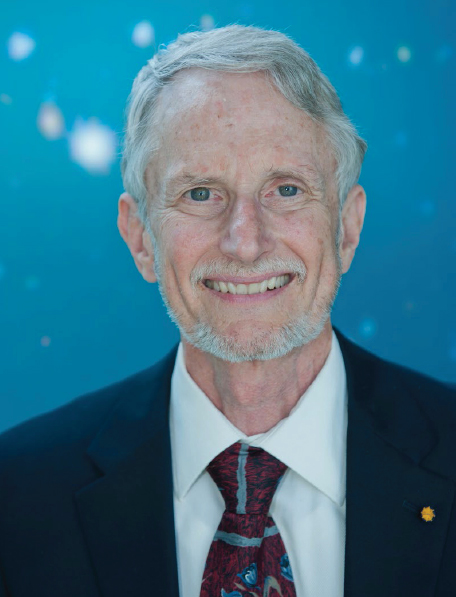Events

24th Annual Great Lecture in Astronomy
ASTROCHEMISTRY: A SONG OF ICE AND DUST
Dr. Neal J. Evans, II
Edward Randall, Jr., M.D., Centennial Professor in Astronomy
Saturday, February 20, 2016
1:30-2:30 PM, Avaya Auditorium [POB 2.302]
Abstract
Since in the late 1960s, we have discovered a large number of molecules, some surprisingly complex, in interstellar space. In addition to providing the sites of star and planet formation, these molecules have inspired an entirely new field of research at the junction of astronomy and chemistry. Observations with infrared telescopes in space over the last decade have revealed that many of these molecules are frozen onto microscopic dust grains. Chemical reactions in these ices lead to greater complexity and reveal clues to the history of how material is added to a forming star. In addition, the icy dust provides the materials for comets and the bioelements for habitable planets.
The Speaker
Dr. Neal Evans earned his bachelor’s degree and doctorate in Physics at the University of California, Berkeley, and did a year and a half of postdoctoral work at Caltech before joining The University of Texas at Austin faculty in 1975. He has taught a number of courses in Astronomy and the Plan II program, including classes about the search for extraterrestrial life, and a seminar on the origin of the Universe and life. One of his goals in teaching is to share his interest in how things have come to be.
A winner of the Graduate Teaching Award in the Department of Astronomy in 1991, he was named the Edward Randall, Jr., M.D., Centennial Professor in Astronomy in 1994. Among many professional honors and awards, he became a Fellow of the American Association for the Advancement of Science in 2012, and he served as the Oort Professor at the University of Leiden in 2014.
Evans’s research interests include molecular clouds, star formation, and millimeter, submillimeter, and infrared astronomy. He has focused his research on the origins of stars and planets. As a graduate student in physics, he worked in a research group started at Berkeley by Nobel laureate Charles Townes. This group led the discovery of interstellar molecules, and, throughout his career, Evans has focused his research on using these molecules and dust grains to study the process of star and planet formation. In recent years, Evans has focused almost all of his research into leading the Cores to Disk (c2d) Spitzer Legacy Project on NASA’s Spitzer Space Telescope. While the c2d project focuses on low mass star formation, he also works on massive star formation, primarily through the Bolocam Galactic Plane Survey, which has surveyed most of the plane visible from Hawaii in 1 mm continuum using the Caltech Submillimeter Observatory (CSO). Together with Spitzer and Herschel surveys, this will provide a full view of sites of massive star formation in our Galaxy, providing a benchmark for understanding extragalactic star formation. He also leads a team with a large key project on the Herschel Space Telescope to study the evolution of dust, ice, and gas as stars and planets form.














